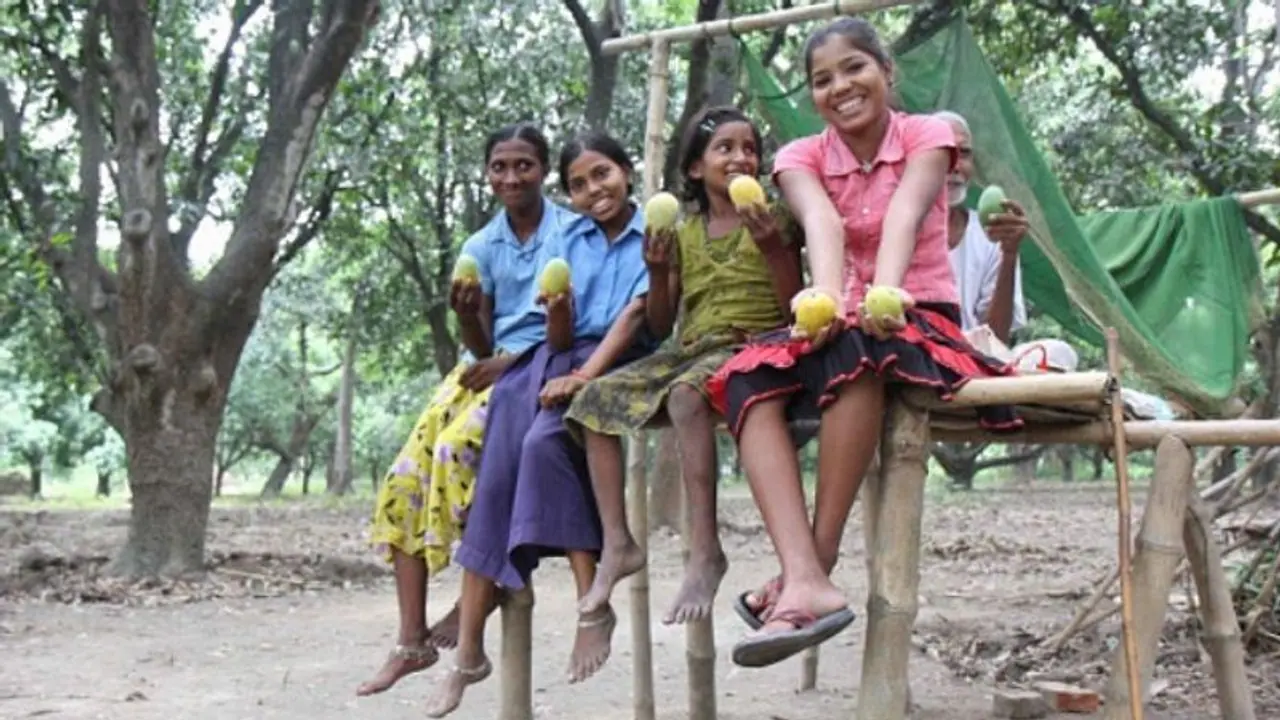There is a nondescript village in Bihar which has set an example to fellow countrymen to treat the girl child as an asset and not a liability
“Woman is the destiny of the world,
Yetwoman is demeaned by destiny;
Woman begets incarnations and apostles,
Yetwoman is the daughter of Satan.”
Remember the mesmerising number ‘Aurat nejanamdiyamardon ko…’ from the film Sadhana, straight from the rebel poet Sahir (magician) Ludhianavi’s heart? Just consider these startling facts: Nearly one million girls are killed before or after birth per year, according to a report. The country’s female to male ratio is 100 males to 93 females compared to a world average of 100 males to 105 females.
Peeved by the growing incidents of female foeticide a girl’s heart rightly cries and prays: Agle janammohebitiyanakijo. But there is a nondescript village in Bihar which has set an example to fellow countrymen to treat the girl child as an asset and not a liability.
When Nirmala Devi gave birth to a girl in 1961, her husband celebrated by planting 50 mango saplings. The births of her second daughter and, years later, granddaughters were celebrated in a similar fashion by her family in Dharhara, a small village 230 km east of Patna in Bihar's Bhagalpur district.
Today, Nirmala Devi has a mango and litchi orchard spread over 10 acres. This unique mix of celebrating the birth of a girl and protecting the environment makes Dharhara a role model for not only villages in Bihar, but the entire nation.
“It’s an age-old custom. Nobody knows how, when and why it was started,” says Nirmala (68), who settled in the village after marriage in 1957.
“But everybody, be it rich or poor, forward or backward, plants trees on the birth of a girl,” she said. The birth of a girl here is greeted with the planting of at least 10 fruit-bearing trees, and children are treated as the avatars of Goddess Lakshmi, she added.
With a population of nearly 5,000 the green village, surrounded by river Ganga in the south and the unpredictable river Kosi in the Northeast, is nestled in the midst of more than 20,000 fruit-bearing trees.
The daughters of Dharhara proudly call themselves green activists. “Besides keeping the environment clean and disease-free, this (planting trees when a girl is born) is like an insurance cover for our daughters,” says Nirmala. “People in town fix money for their daughters’ marriage,” she adds. “We plant fruit trees.”
Here, the villagers plant at least 10 fruit-bearing trees upon the birth of girls and use resources for education and marriage of these girls. This practice serves twin purposes: environment conservation and gender sensitivity.
The age-old practice of Dharhara villagers came in for praise from chief minister Nitish Kumar, who said the people have set an example to fellow countrymen to treat the girl child as an asset and not a liability. “If the country has to gain significantly on gender ratio, here is an example to follow — a village in Bihar that celebrates the birth of a girl by planting trees”, he said.
Kumar said the locals have in their own novel way served twin purposes, that of environment conservation and gender sensitivity. He hailed the villagers of Dharhara for setting a positive example to their fellow countrymen. “The practice of planting trees to mark the birth of girl child in the village and celebrating the occasion is worth emulating at a time when the gender ratio in the country has been a reason for concern”, he said.
Kumar emphasized that the villagers’ concern for the girl child and environment needed publicity across the country and the world and wished a documentary film to be made on the village by talking to each villager for wide publicity.
“Once in our lives, most of us must have heard that a child is a ‘gift’ from God. Though whatever biology may suggest, it is not an uncommon sight in the country to see couples praying to be blessed with a child. But almost half of India, no longer considers it a blessing if that child happens to be a girl. The blessing soon becomes a curse and the ‘precious gift’ is done away with as soon as possible before extending another demand to God, that of a ‘male’ child.
The doing away often includes either being ‘given’ in marriage to another toddler (or in some cases, to men twice or even thrice their age) or worse, slaying her even before she can take one free breath. Of late, technology seems to have facilitated this diabolical slaughter even before the birth of the child in the form of female foeticide,” Munni Devi (69), a native of the village said.
“If the patriarchal society has made the rules then they can surely be reworked. Why do we need to have different attitudes towards men and women? Why can’t they just be treated as individuals and valued for their worth? Her every unformed limb is battling for her rights, her every stifled cry begs for freedom and her every unsung death mourns the dilatory demise of humanity,” Sarita Kumari Singh (26) said.
Vox populi
Kapil Dev
“No society can survive without women. The practice of female foeticide not only is a violation of human rights but also puts a question mark on our integrity as humans. It stagnates our growth as people.”
Nitish Kumar
“The practice of planting trees to mark the birth of girls and celebrating the occasion is worth emulating at a time when the gender ratio in the country has been a reason of debate. If the nation has to gain significantly on gender ratio, here is an example to follow.”
Sheila Dikshit
“Skewed child sex ratio is surely a matter of concern. Female foeticide is also a moral and social issue. We appeal to people to save the girl child. Our government had initiated a range of welfare measures to improve the gender disparity.”
